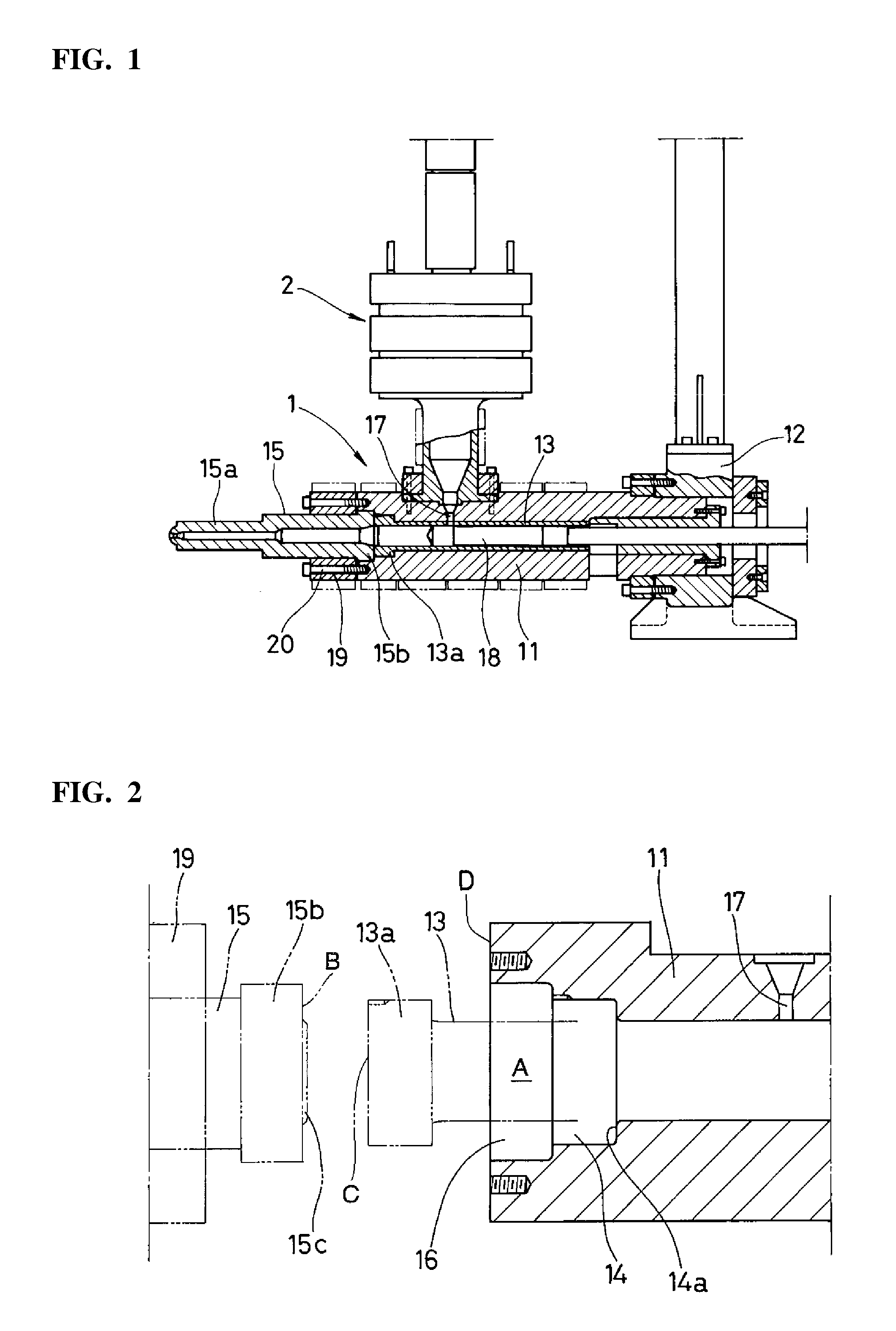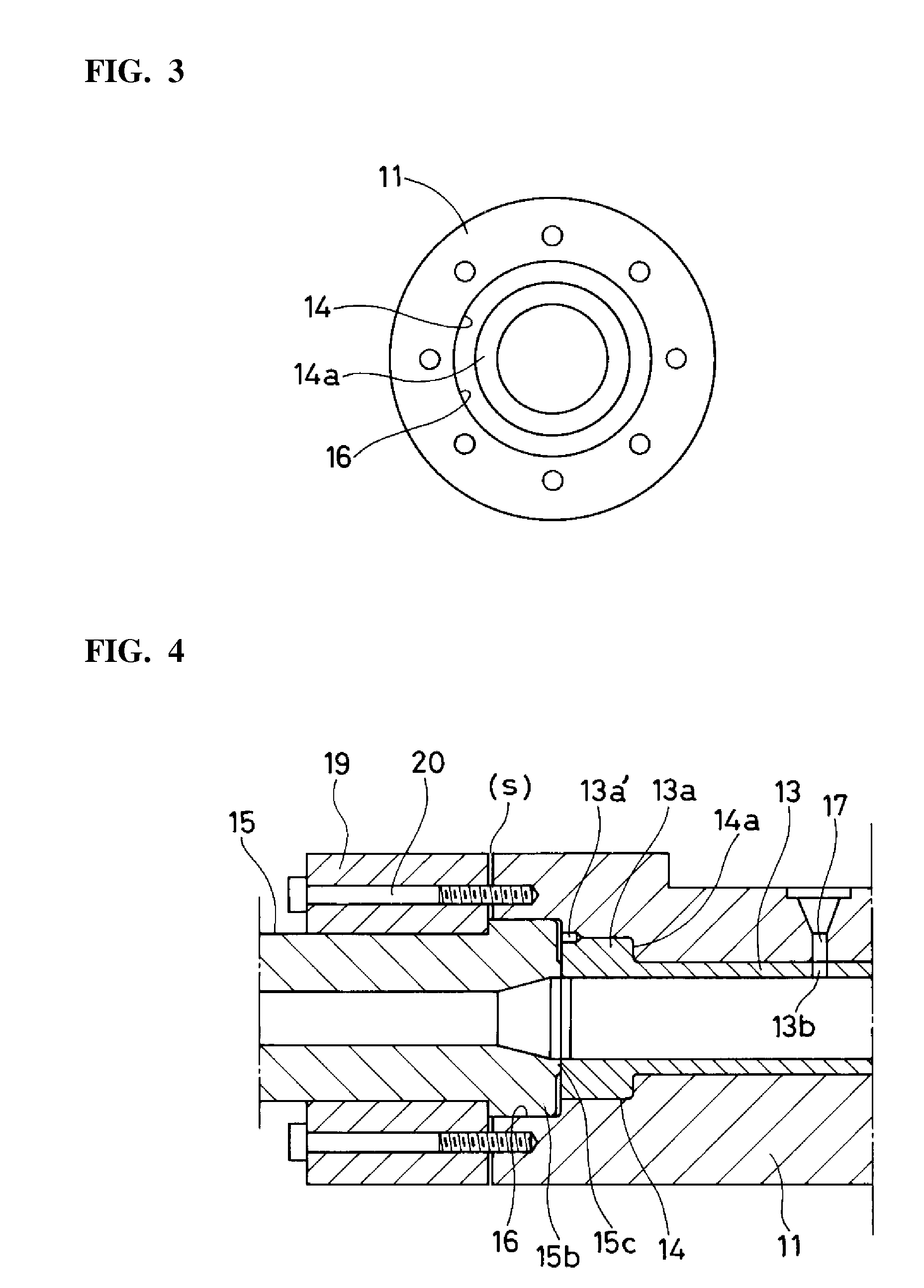Injection cylinder in injection apparatus for molding metal material
- Summary
- Abstract
- Description
- Claims
- Application Information
AI Technical Summary
Benefits of technology
Problems solved by technology
Method used
Image
Examples
Embodiment Construction
[0030]In FIGS. 1 to 4, the reference numeral 1 denotes an injection cylinder, which is horizontally placed on a not-shown base with the rear end of its cylinder body 11 passed through and fixed to a holding plate 12. The cylinder body 11 has heating means on its periphery. The reference numeral 2 denotes a material melting and storing unit which is arranged on the front part of the cylinder body 11.
[0031]The cylinder body 11 is made of a cylinder having a first fitting part 14 and a second fitting part 16 in an opening A in its front end. A flange 13a of a cylinder liner 13 is to be fitted to the first fitting part 14, and a flange 15a of a nozzle member 15 is to be fitted to the second fitting part 16. A feed opening 17 is formed in the top of the front part of the cylinder body 11. As will be described, the cylinder liner 13 is passed through this cylinder body. The inner wall of this cylinder liner 13 forms a cylinder hole, into which a plunger 18 is inserted so as to be capable ...
PUM
| Property | Measurement | Unit |
|---|---|---|
| Thickness | aaaaa | aaaaa |
| Diameter | aaaaa | aaaaa |
| Strength | aaaaa | aaaaa |
Abstract
Description
Claims
Application Information
 Login to View More
Login to View More - R&D
- Intellectual Property
- Life Sciences
- Materials
- Tech Scout
- Unparalleled Data Quality
- Higher Quality Content
- 60% Fewer Hallucinations
Browse by: Latest US Patents, China's latest patents, Technical Efficacy Thesaurus, Application Domain, Technology Topic, Popular Technical Reports.
© 2025 PatSnap. All rights reserved.Legal|Privacy policy|Modern Slavery Act Transparency Statement|Sitemap|About US| Contact US: help@patsnap.com



